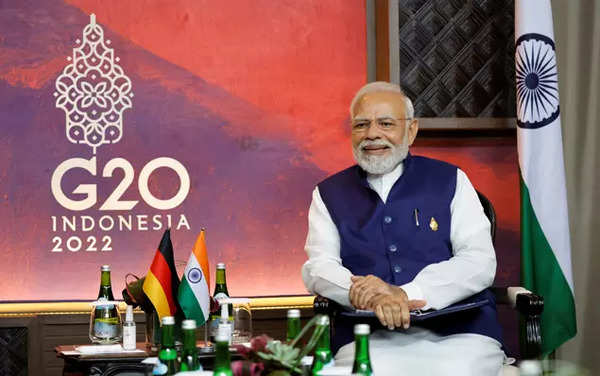Morgan Stanley predicts that India will drive a fifth of world expansion this decade, positioning the nation as one of only three that can generate more than $400 billion in annual output growth.
New Delhi: India’s economic transformation is kicking into high gear, a report in the Qatar Tribune, says.
The government is spending nearly 20 percent of its budget this fiscal year on capital investments, the most in at least a decade. Prime Minister Narendra Modi is closer than any predecessor to claim that the nation — which may have just passed China as the world’s most populous — is finally meeting its economic potential.
To get there, he’ll have to wrestle with the drawbacks of its exceptional scale: the remnants of the red tape and corruption that has slowed India’s rise, and the stark inequality that defines the democracy of 1.4 billion people.
“India is on the cusp of huge change,” said Nandan Nilekani, a founder of Infosys Ltd., one of the nation’s largest technology services companies. India has quickly created capacity to support tens of thousands of startups, a few billion smartphones and data rates that rank among the lowest in the world, he said.
India and Vietnam will be the big beneficiaries as companies move toward a “China-plus-one” strategy, supply-chain analysts say.
Apple’s three key Taiwanese suppliers have won incentives from Modi’s government to boost smartphone production and exports. Shipments have more than doubled to top $2.5 billion of iPhones from April through December.
As powerhouses from China to Germany contend with slowing growth, the stakes are rising to find another nation equipped to propel the global economy.
Morgan Stanley predicts that India will drive a fifth of world expansion this decade, positioning the nation as one of only three that can generate more than $400 billion in annual output growth.
The thesis is reflected in global equity markets, with India’s Sensex index trading last quarter at the highest in a decade versus the S&P 500. Relative to other emerging markets, Indian stocks have never been higher.
“People are looking at which other place over the next decade is going to be a great place to put capital,” Nilekani said. “I haven’t seen this kind of interest in India for 15 years.”
In a multipolar world, India’s embrace of a middle path has bolstered its image as a nation “with which everyone is interested in having a good relationship,” said Kenneth Juster, a former US ambassador to India.
Modi’s manufacturing aspirations are not new. His “Make in India” campaign kicked off in 2014, seeking to emulate China and the tigers of East Asia — from Singapore to South Korea and Taiwan — that climbed into the ranks of rich economies by filling factories with workers making products the world wanted to buy.
Boosting manufacturing to 25 percent of GDP, a key metric for the programme, has proven elusive. The ratio rose to 17.4% in 2020 compared with 15.3 percent in 2000, according to data from McKinsey. Vietnam’s factory sector more than doubled its share of GDP during the same period.
But as this year’s president of the Group of 20 nations, India has momentum. An external strategy built on multiple alliances and unapologetic self-interest has seen the nation boost purchases of Russian oil by 33 times, ignoring pressure from Washington.
There are even some signs of pragmatism when it comes to the tense relationship with neighboring China — more than a dozen of Apple’s Chinese suppliers are receiving initial clearance from New Delhi to expand operations, underpinning the tech giant’s efforts to divert production to India.
In a multipolar world, India’s embrace of a middle path has bolstered its image as a nation “with which everyone is interested in having a good relationship,” said Kenneth Juster, a former US ambassador to India.
“India is positioning itself, and using its presidency of the G-20 to do so, as a bridge between east and west, and north and south,” he said. “A lot of companies feel that given its size, given its young population, given its inevitable force in international affairs, India is a place where they should be.”
*******************************************************************
Readers
These are extraordinary times. All of us have to rely on high-impact, trustworthy journalism. And this is especially true of the Indian Diaspora. Members of the Indian community overseas cannot be fed with inaccurate news.
Pravasi Samwad is a venture that has no shareholders. It is the result of an impassioned initiative of a handful of Indian journalists spread around the world. We have taken the small step forward with the pledge to provide news with accuracy, free from political and commercial influence. Our aim is to keep you, our readers, informed about developments at ‘home’ and across the world that affect you.
Please help us to keep our journalism independent and free.
In these difficult times, to run a news website requires finances. While every contribution, big or small, will makes a difference, we request our readers to put us in touch with advertisers worldwide. It will be a great help.
For more information: pravasisamwad00@gmail.com



